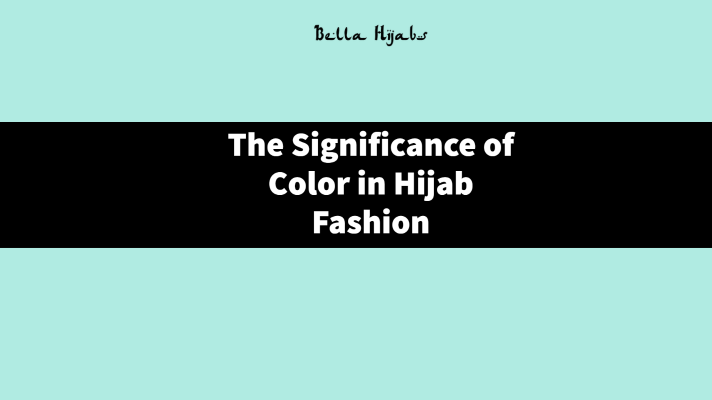
The hijab is an essential component of Muslim women's fashion and identity. It is a symbol of modesty and religious devotion and has become an increasingly popular style statement in recent years. The hijab comes in various colors and styles and plays a significant role in expressing individuality and fashion choices.
Colors are not just a visual phenomenon but have the power to evoke emotions and influence behavior. Each color has a unique meaning and is associated with certain emotions and moods. In hijab fashion, color plays an essential role in expressing personality and mood. Muslim women can choose to wear a hijab in different colors based on their mood, preference, and occasion.
White, for instance, is a common color in hijab fashion. It symbolizes purity, innocence, and peace. It is also a versatile color that can be worn in any season and for any occasion. White hijabs are often paired with colorful clothing to create a contrasting effect, making the wearer's outfit more vibrant and lively.
Black is another popular color in hijab fashion. It is a color of elegance, sophistication, and mystery. Black hijabs are often paired with formal wear and are ideal for evening events. They also convey a sense of seriousness and professionalism, making them suitable for work environments and formal occasions.
Blue is a color associated with calmness, serenity, and tranquility. It is a popular color in hijab fashion, especially for summer wear. Blue hijabs complement floral prints and light-colored outfits and create a refreshing and peaceful look.
Green is a color that represents nature, growth, and fertility. It is a popular color in hijab fashion and is often worn during religious events such as Eid. Green hijabs are also worn to celebrate the arrival of spring and convey a sense of freshness and renewal.
Pink is a color associated with femininity, softness, and romance. It is a popular color in hijab fashion, especially for young Muslim women. Pink hijabs are often paired with floral prints and pastel-colored outfits to create a feminine and graceful look.
Red is a bold and passionate color that symbolizes love, energy, and excitement. It is often worn for special occasions such as weddings and parties. Red hijabs can be paired with gold jewelry and accessories to create a luxurious and glamorous look.
Purple is a color of royalty, nobility, and luxury. It is a popular color in hijab fashion, especially for winter wear. Purple hijabs can be paired with black or white outfits to create a chic and elegant look.
Yellow is a color associated with happiness, positivity, and optimism. It is a popular color in hijab fashion, especially for summer wear. Yellow hijabs can be paired with floral prints and light-colored outfits to create a cheerful and vibrant look.
Brown is a color that represents earthiness, warmth, and comfort. It is a popular color in hijab fashion, especially for fall and winter wear. Brown hijabs can be paired with earthy tones such as olive green and burgundy to create a cozy and comfortable look.
Orange is a color associated with energy, enthusiasm, and creativity. It is a popular color in hijab fashion, especially for casual wear. Orange hijabs can be paired with denim and white outfits to create a fresh and youthful look.
There are also many variations of each color, such as pastel pink, coral, navy blue, forest green, and more. The key is to experiment with different colors and find ones that complement your skin tone and express your personality and mood.
In addition to the emotions and moods they evoke, colors in hijab fashion also play a significant role in complementing skin tone and enhancing overall appearance. Choosing the right color for a hijab can make a significant difference in the overall look and feel of an outfit. The right color can make the skin look brighter and healthier and can create a harmonious and balanced look.
The significance of color in hijab fashion cannot be overstated. It is an essential aspect of expressing personality, mood, and individuality. The right color can complement the skin tone, enhance overall appearance, and evoke emotions and moods.
Overall, the significance of color in hijab fashion is a powerful tool for Muslim women to express their individuality and creativity. Each color has its own unique meaning and can evoke different emotions and moods. By understanding the significance of color, Muslim women can create beautiful and stylish hijab fashion looks that reflect their culture, faith, and personal style.
